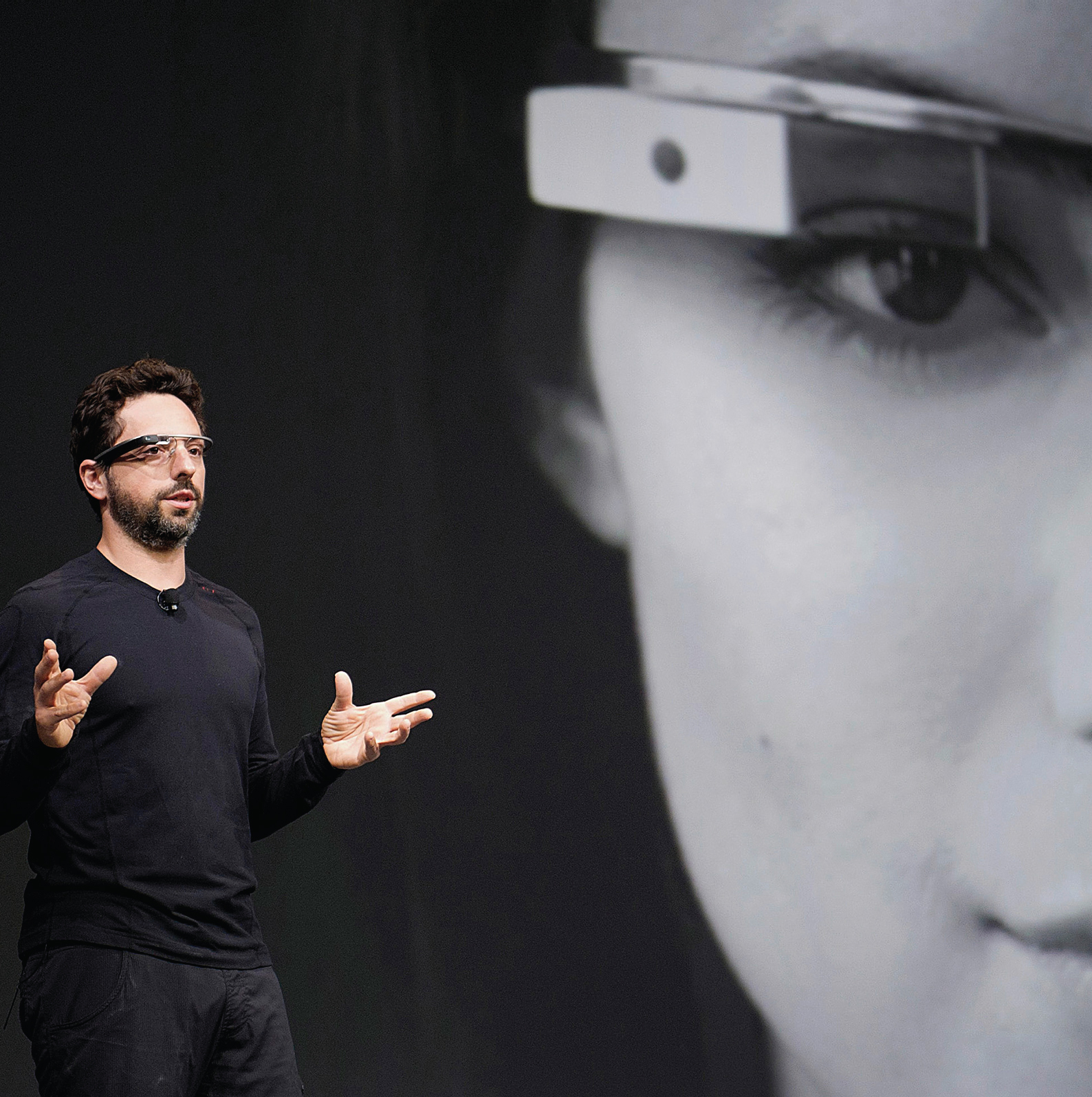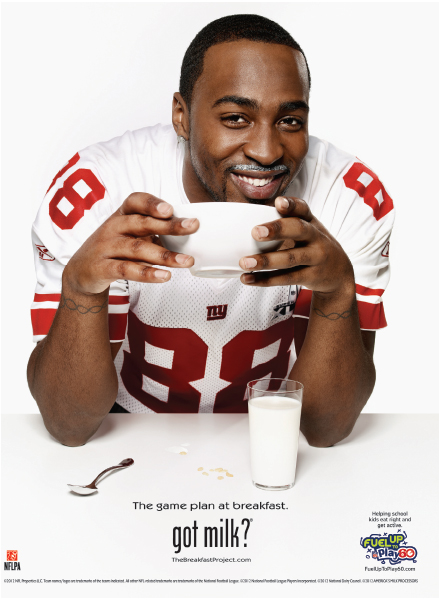Introduction
| 11 |
| Advertising and Commercial Culture |
“When you put a pair of these glasses on, your gaze may be revealing more about you than you may realize—and advertisers will soon pay a hefty premium to gain access to your eyes.”
RICHARD TSO, HUFFINGTON POST, 2013

384 Early Developments in American Advertising
389 The Shape of U.S. Advertising Today
399 Persuasive Techniques in Contemporary Advertising
405 Commercial Speech and Regulating Advertising
414 Advertising, Politics, and Democracy
There’s a saying in advertising: “Dollars always follow eyeballs.”1 That is, the advertising money flows to whichever medium is attracting people’s attention. Over the past century, those eyeballs have shifted from newspapers and magazines to television to the Internet—and now the Internet as accessed via tablets and smartphones. With each new medium, advertisers get closer to us—in our workplaces, in our homes, and now in our hands with mobile devices. The next new medium could be even closer—right in front of our eyeballs.
Well, our right eyeball, for now. One of Google’s most talked-about recent inventions, announced in 2012 and tested in 2013, is Google Glass, a mobile computer worn like eyeglasses, with a tiny camera and clear optical display over one’s right eye. The wearer can use voice commands to have “Glass” take a still photo, record video, send messages, search Google, and have a layer of augmented reality (for example, a map with directions) superimposed over one’s view.
“In today’s multi-screen world we face tremendous opportunities as a technology company focused on user benefit. It’s an incredibly exciting time to be at Google,” says Larry Page, CEO of Google.2 But journalist Richard Tso reminds us that Google Glass might really be about more than just user benefit: “After the novelty of such a device begins to wear off, we can then examine how Google Glass may fit into the larger strategy down the road by Silicon Valley powerhouse Google. The company, after all, is an advertising company….”3
With Google Glass, Google has invented a new screen for “today’s multi-screen world” that can literally put ads right in front of our eyes. Imagine walking down a street, our view of shops and storefronts layered with translucent images of specials and sales. Would that be helpful or annoying? Google, which has always tried to be low-key in its advertising style, will eventually find out. Richard Tso is even more concerned about information going in the other direction, from the Google Glass user back to the advertiser. Eye-tracking technology already exists and can determine where and for how long someone is looking. According to Tso, further advances in eye-tracking “will soon make it possible for ads to look right back at you, seeing where you look on a webpage and how long your gaze lingers on a banner or rich media advertisement for, say, Adidas or Starbucks.” Google Glass has the potential to be the most powerful measure of advertising exposure ever.
Google Glass, if successful, could be a way for Google to further compete with its rival Apple. Google has been successful making advertising money from its popular search engine, but with Apple’s self-enclosed app environments for its iPhone and iPod, Google sees the need for developing its own devices, to ensure more control over screens. Google, which is already the biggest advertising company in the world, bought AdMob, a company that serves ads to mobile screens, for $750 million in 2010. With so many mobile phone and tablet devices (including Google’s own Nexus 7 tablet) using the Android platform, Google has a ready network of devices for mobile advertising. Google hopes that Google Glass might become the next big device.
Then again, Google Glass might never catch on. It may be that potential users will be concerned about the intrusiveness of ads being delivered directly to one’s eyes, and the intrusiveness of one’s eyes being tracked for data. Or, it may be (as some Internet memes already suggest) that people look dorky in them. If Google Glass does fail, we can be certain of one thing: Advertisers will be looking for another way to follow our eyeballs.
“You can tell the ideals of a nation by its advertisements.”
NORMAN DOUGLAS, SOUTH WIND, 1917
 TODAY, ADVERTISEMENTS ARE EVERYWHERE AND IN EVERY MEDIA FORM. Ads take up more than half the space in most daily newspapers and consumer magazines. They are inserted into trade books and textbooks. They clutter Web sites on the Internet. They fill our mailboxes and wallpaper the buses we ride. Dotting the nation’s highways, billboards promote fast-food and hotel chains, while neon signs announce the names of stores along major streets and strip malls. Ads are even found in the restrooms of malls, restaurants, and bars.
TODAY, ADVERTISEMENTS ARE EVERYWHERE AND IN EVERY MEDIA FORM. Ads take up more than half the space in most daily newspapers and consumer magazines. They are inserted into trade books and textbooks. They clutter Web sites on the Internet. They fill our mailboxes and wallpaper the buses we ride. Dotting the nation’s highways, billboards promote fast-food and hotel chains, while neon signs announce the names of stores along major streets and strip malls. Ads are even found in the restrooms of malls, restaurants, and bars.
At local theaters and on DVDs, ads now precede the latest Hollywood movie trailers. Corporate sponsors spend millions for product placement: buying spaces for particular goods to appear in a TV show, movie, or music video. Ads are part of a deejay’s morning patter, and ads routinely interrupt our favorite TV and cable programs. In 2012, nearly sixteen minutes and twenty seconds of each hour of prime-time network television carried commercials, program promos, and public service announcements—an increase from thirteen minutes an hour in 1992. In addition, each hour of prime-time network TV carried about eleven minutes of product placements.4 This means that about twenty-six minutes of each hour (or 43 percent) include some sort of paid sponsorship. According to the Food Marketing Institute, the typical supermarket’s shelves are filled with thirty thousand to fifty thousand different brand-name packages, all functioning like miniature billboards. By some research estimates, the average American comes into contact with five thousand forms of advertising each day.5

Advertising comes in many forms, from classified ads to business-to-business ads, providing detailed information on specific products. However, in this chapter we concentrate on the more conspicuous advertisements that shape product images and brand-name identities. Because so much consumer advertising intrudes into daily life, ads are often viewed in a negative light. Although business managers agree that advertising is the foundation of a healthy media economy—far preferable to government-controlled media—audiences routinely complain about how many ads they are forced to endure, and they increasingly find ways to avoid them, like zipping through television ads with TiVo and blocking pop-up ads with Web browsers. In response, market researchers routinely weigh consumers’ tolerance—how long an ad or how many ads they are willing to tolerate to get “free” media content. Without consumer advertisements, however, mass communication industries would cease to function in their present forms. Advertising is the economic glue that holds most media industries together.
In this chapter, we will:
- Examine the historical development of advertising—an industry that helped transform numerous nations into consumer societies
- Look at the first U.S. ad agencies; early advertisements; and the emergence of packaging, trademarks, and brand-name recognition
- Consider the growth of advertising in the last century, such as the increasing influence of ad agencies and the shift to a more visually oriented culture
- Outline the key persuasive techniques used in consumer advertising
- Investigate ads as a form of commercial speech, and discuss the measures aimed at regulating advertising
- Look at political advertising and its impact on democracy
It’s increasingly rare to find spaces in our society that don’t contain advertising. As you read this chapter, think about your own exposure to advertising. What are some things you like or admire about advertising? For example, are there particular ad campaigns that give you enormous pleasure? How and when do ads annoy you? Can you think of any ways you intentionally avoid advertising? For more questions to help you understand the role of advertising in our lives, see “Questioning the Media” in the Chapter Review.